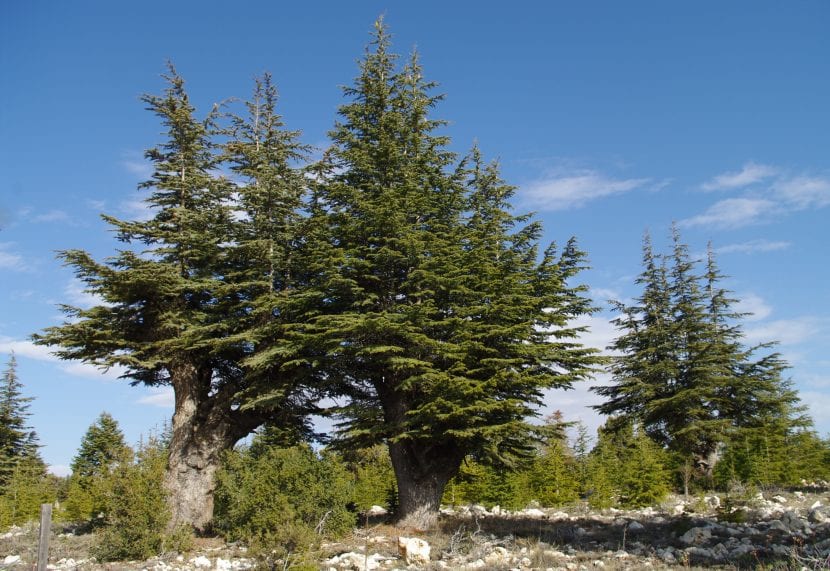
El cedar it is a slow-growing conifer that can reach impressive height. Its leaves are very reminiscent of those of pines, which is why they belong to the same botanical family: Pinaceae. Elegant in bearing, having one in the garden is always a good idea.
Its care is not difficult, so why not buy a copy? If you want to know everything about this magnificent plant, you have come to the right place .
Cedar characteristics
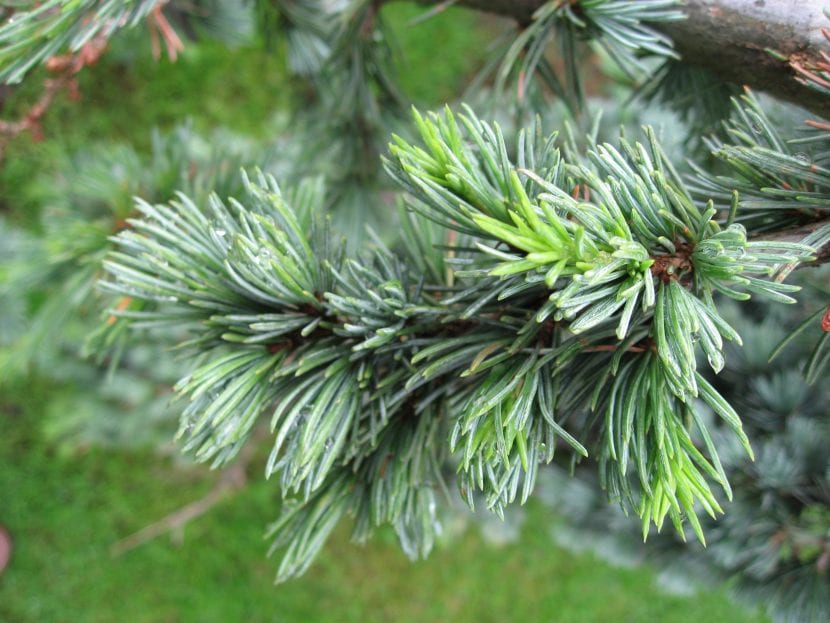
Our protagonist is a evergreen conifer (looks evergreen) that grows naturally in North Africa, the Middle East, and the Himalayas. It can reach a height of between 25 and 50 meters, with a crown that can be pyramidal, or more or less parasol, dense. The leaves, called needles, are short, 2 to 4cm, and are gathered in bunches on short twigs.
The fruit is an ovoid pineapple measuring 6 to 11cm long and 4 to 6cm in diameter, inside which are winged seeds with a triangular shape.
The life expectancy of this tree is 2000 years the poor.
Most popular species
Atlas cedar o Cedrus atlantic
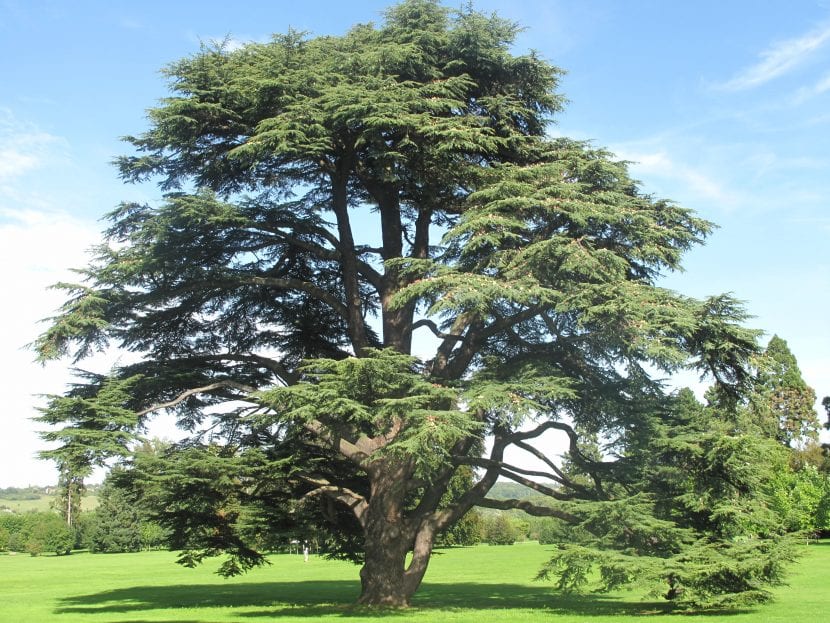
The Atlas Cedar, also known as Silver Cedar or Moroccan Pine, is native to the Atlas Mountains of Algeria and Morocco, at an altitude between 1370 and 2200 meters above sea level. It grows to a height of 35 meters, with a trunk diameter of up to 2m. It is very similar to cedar, in fact there are several authors who consider that it is a variety of it called Cedrus libani var. atlantic.
Himalayan cedar or cedrus deodara
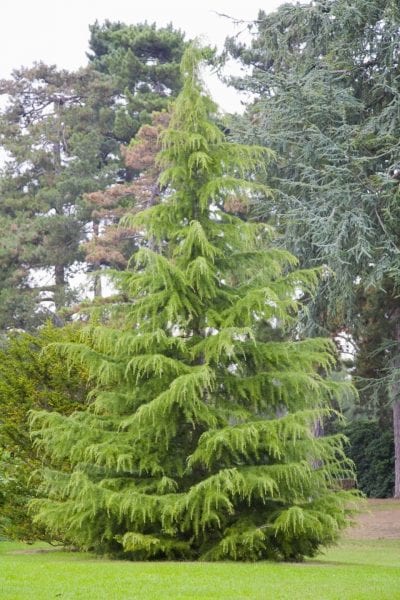
Image - TheSpruce.com
The Himalayan Cedar, also known by the names Weeping Cedar or Deodara Cedar, is native to the west of the Himalayan Mountains, where it grows at an altitude between 1500 and 3200 meters above sea level. It can reach a height of up to 70 meters, but the most common is that it exceeds 50m. Unlike the rest of cedars, this one has fallen branches, which gives it the appearance of a weeping tree. Because of this, it is probably the most ornamental of all.
Cedar of Lebanon or cedar
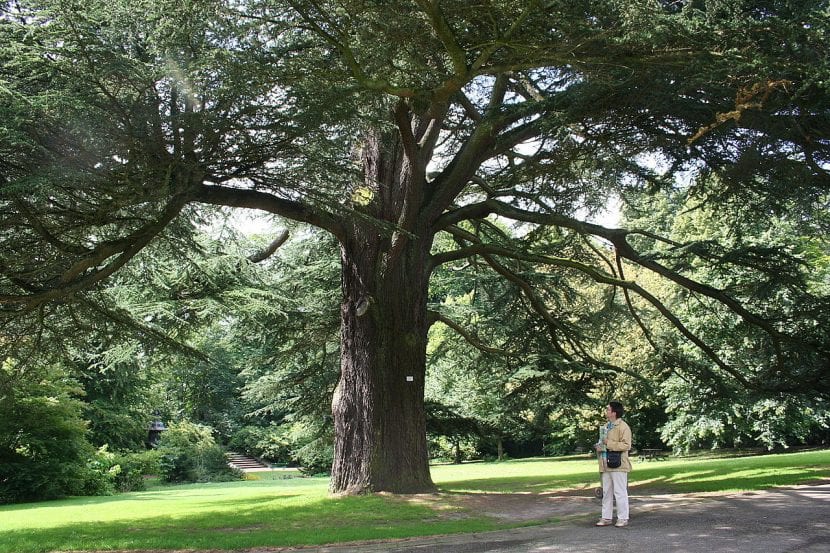
The Lebanon Cedar, also known as Solomon's Cedar, is a species native to the mountains of Lebanon, western Syria, and south central Turkey. It grows in the forests, at an altitude between 1300 and 1800 meters above sea level. It reaches a height of 30 meters, with a thick trunk up to 3m in diameter. The crown is pyramidal, formed by intense green leaves.
How do you take care of yourself?

If you want to have a specimen in your garden, then we explain what care you should provide:
Location
Due to the size it reaches, must be placed outside, full sun. If we live in an area with a very hot climate, we will put it in a place where it can give it some shade.
It is important to plant it at a distance of at least 7 meters from other tall plants, soil and pipes so that there are no problems.
Land
It grows in all types of soils, except those that are very humid. Likewise, it must be taken into account that its roots will develop better in those who have good sewer system.
Irrigation
Cedar watering it has to be frequentespecially during the summer. The frequency will vary depending on the climate and location, but generally it should be watered about three times a week during the summer season, and 1-2 / week the rest of the year.
Subscriber
Besides giving him water, it is necessary to pay it from time to time throughout the spring and summer. For this we can put a layer around the organic fertilizer plant, such as guano o manure, once a month. In this way, you will be able to grow stronger and somewhat faster 🙂.
Pruning
It should not be pruned. Over time it will develop its natural shape.
Planting time
In spring, when temperatures begin to rise above 15ºC. Due to its characteristics, we do not recommend growing it as a potted plant.
Multiplication
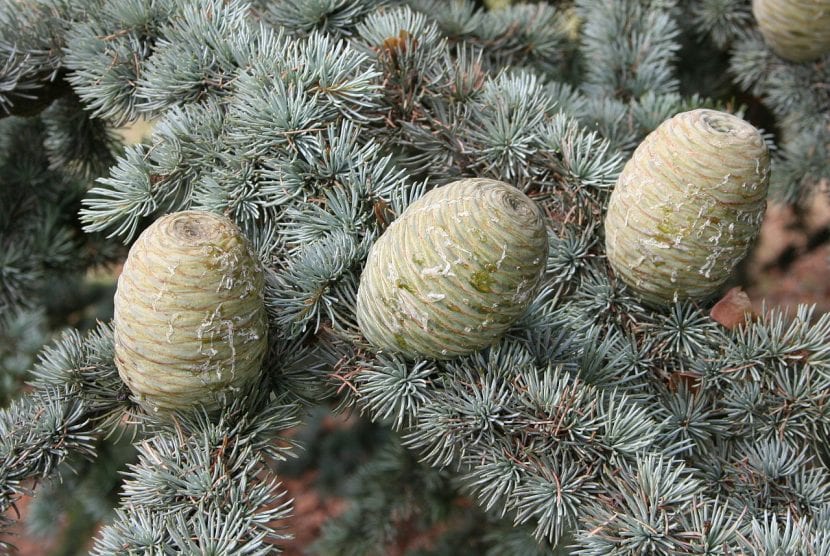
Cedar can be multiplied in two different ways: by seeds and by cuttings. Let us know how to proceed in each case:
Seeds
If we want to sow its seeds, we can follow this step by step:
- The first thing to do is obtain the seeds as soon as they mature, during the fall.
- Afterwards, they are put in a glass of water for five hours.
- The seedbed is then filled with universal culture substrate mixed with perlite in equal parts and watered.
- The seeds are then spread over the surface, and covered with a very thin layer of substrate.
- Now, it is sprinkled with sulfur or copper to prevent fungus.
- Finally, it is watered.
Keeping the substrate moist and the seedbed in full sun, the first seedlings will begin to emerge after two months.
Cuttings
If we are in a hurry to have new specimens, we can choose to make cuttings as follows:
- The first thing is to obtain the cutting in late summer or during autumn, cutting a branch of about 40cm in length.
- Afterwards, the base is soaked with water, and impregnated with rooting hormones.
- They are then planted in a pot with growing medium and sprayed with fungicide to prevent fungi.
- Finally, it is watered and covered with an inverted clear plastic bottle.
It will root in about 1 month.
Pests
It is a very resistant plant, but it can be attacked by mealybugs y aphids which can be eliminated with specific insecticides.
Rusticity
Withstands frost up to -15ºC.
Cedar uses
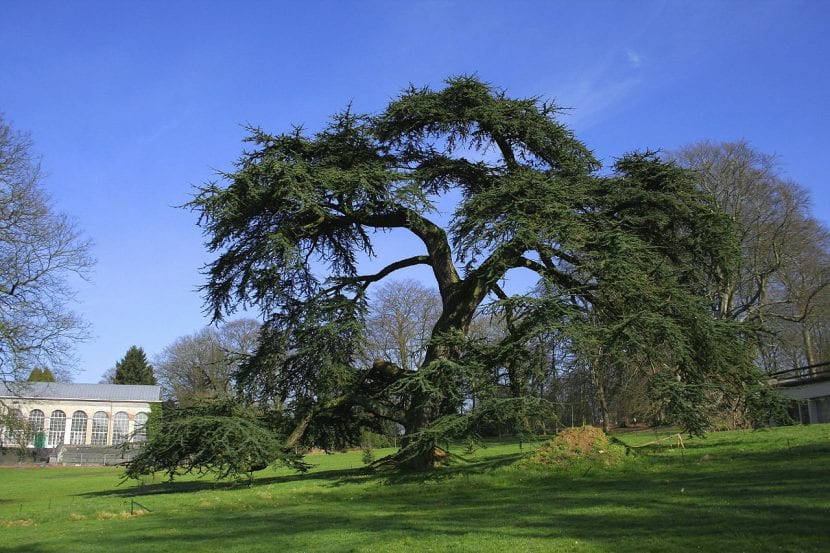
It is a conifer that has several uses, which are:
Ornamental
There are many species that are used in gardens, such as Cedrus atlantica 'Glauca' that has the blue leaves, or the cedar. As isolated specimens they look great, since they also give good shade.
Carpentry
Formerly it was used to build houses, as for example in Ancient Egypt; However, being fragile, today it is used more to cover exterior walls, and as wooden tiles. It is also used in shipbuilding, in the manufacture of sarcophagi and musical instruments such as guitars.
Medicinal
The aromatic natural oil of the Atlas cedar, whose scientific name is Cedrus atlantic, has antiseptic properties.
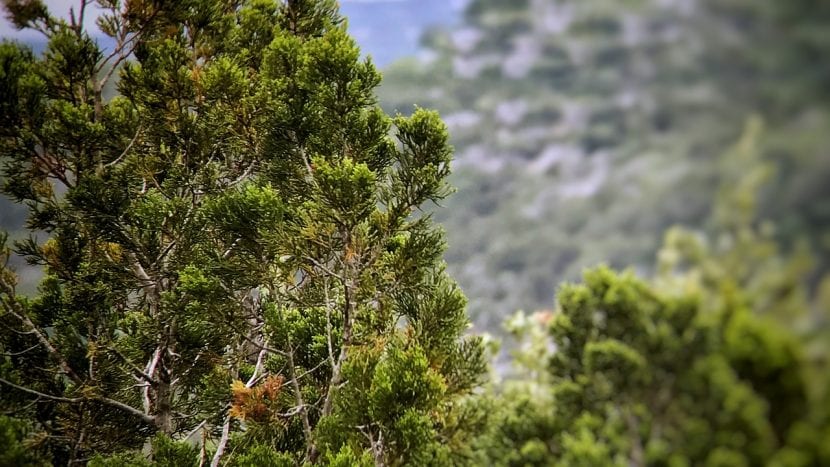
What did you think of the cedar? 🙂
No type of cedar, like most conifers, has NEVER been able to reproduce by cuttings
Hello Alejandro.
Multiplying it by cuttings is very difficult, but before writing this article I was consulting in different gardening forums and I read that it was possible, but controlling the temperature and humidity a lot.
Even so, it is still more feasible to do it for seeds.
Regards!
I have found some "wood roses" and have been told that they are dead Himalayan Cedar pine cones. Could you get seeds out of these to plant?
Very nice tree. Thank you!!
Thanks to you.